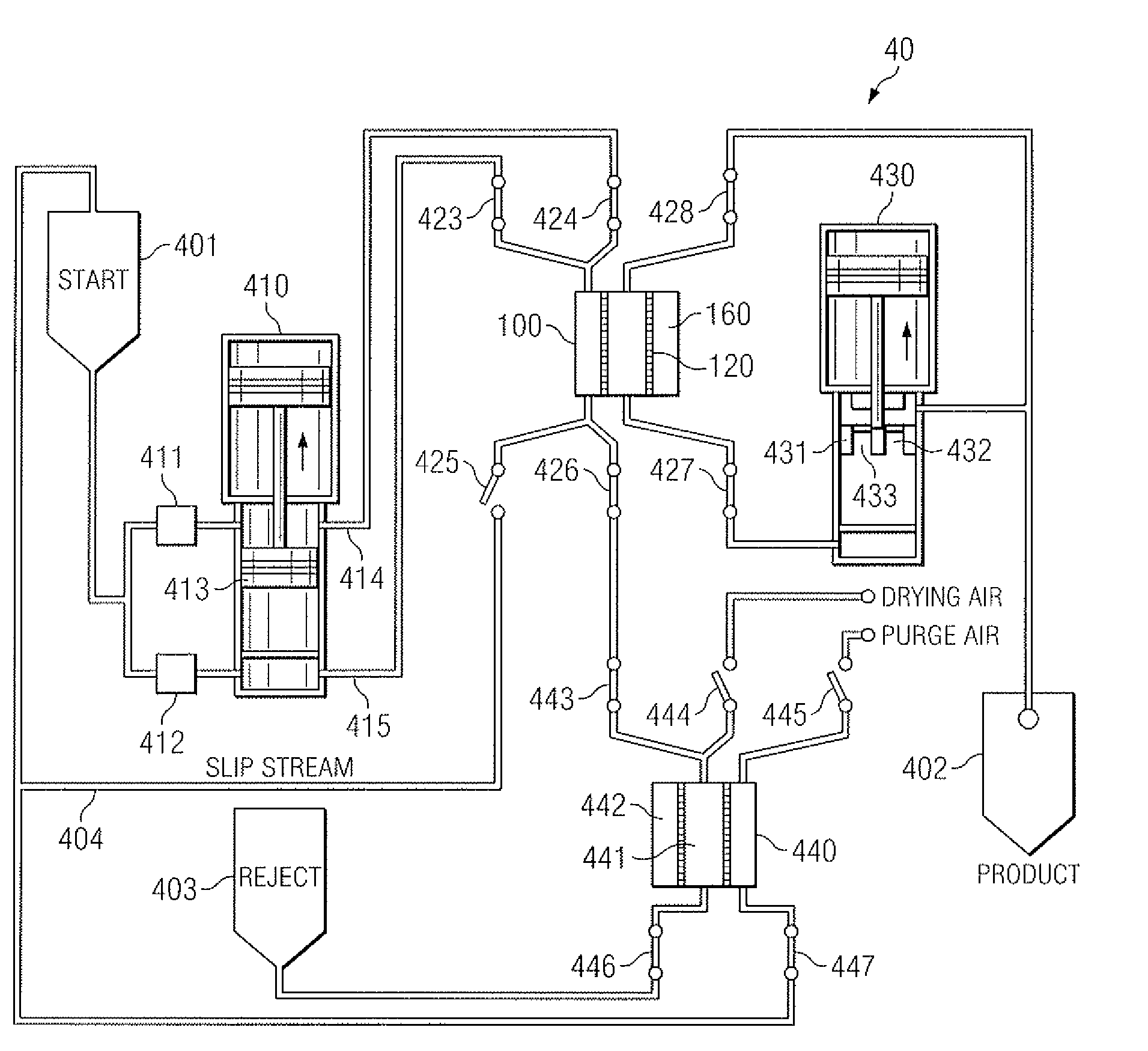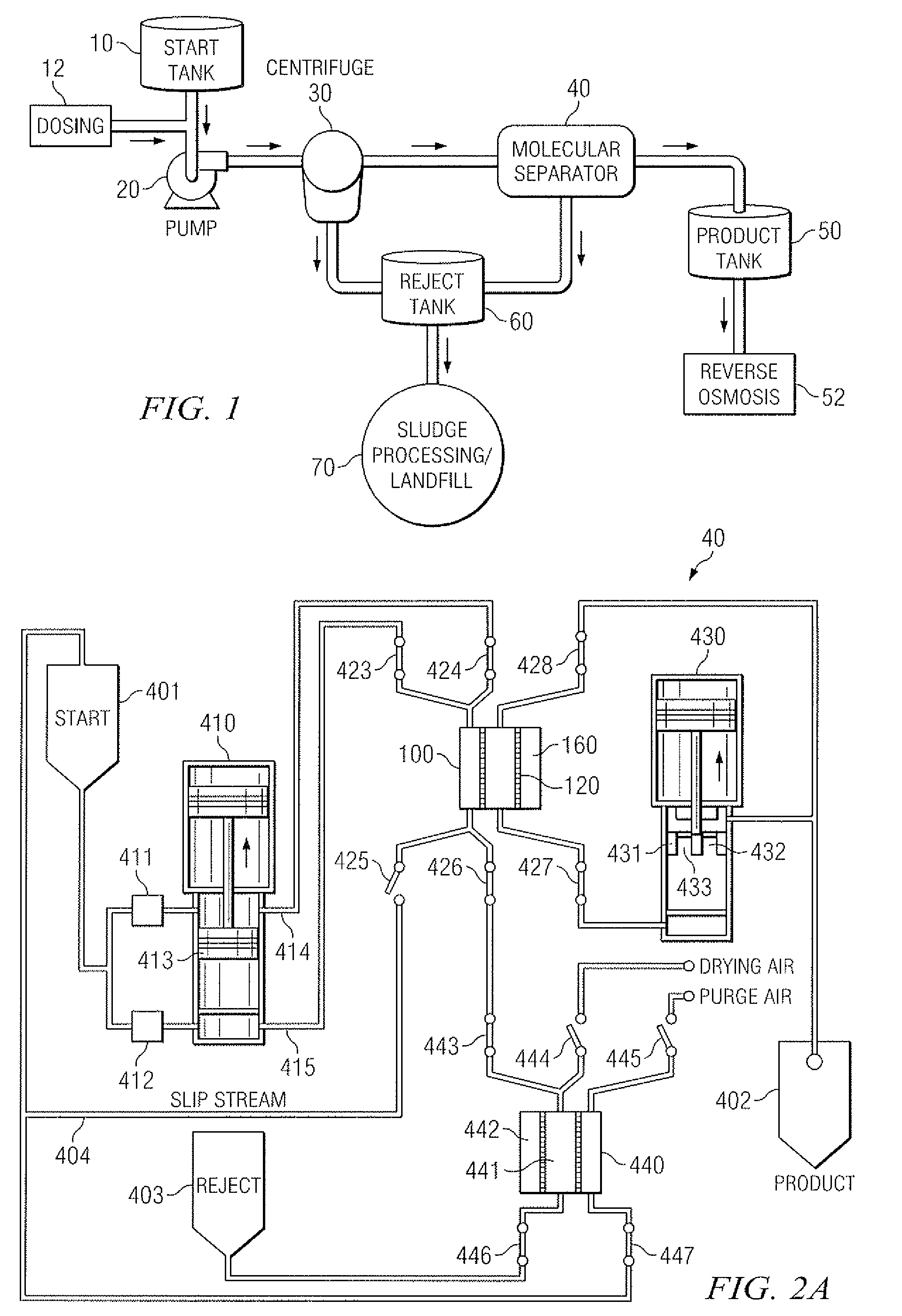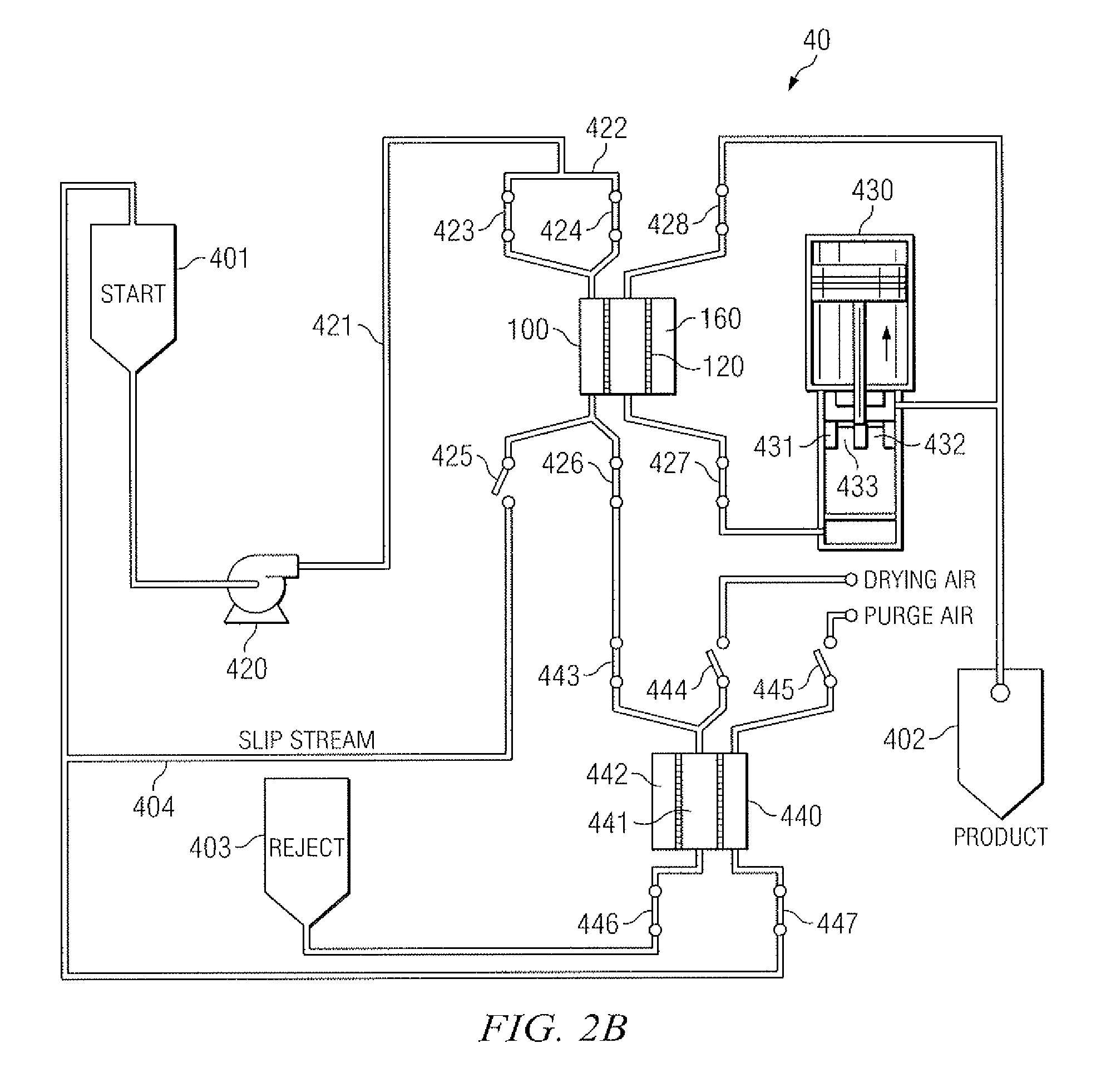Molecular separator
a technology of molecular separator and separator plate, which is applied in the direction of filter regeneration, electrolysis, water/sewage treatment, etc., can solve the problems of imposing surcharges and penalties on the entity, gas fields producing large quantities of contaminated fluid that can have significant environmental effects, and undesirable suspension and/or dissolved solids in waste fluid and other fluids, etc., to enhance standard filtration, enhance particle kinetics and cavitation physics, and enhance the effect of filtration efficiency
- Summary
- Abstract
- Description
- Claims
- Application Information
AI Technical Summary
Benefits of technology
Problems solved by technology
Method used
Image
Examples
Embodiment Construction
[0029]The present invention is directed towards an improved fluid treatment system for removing contaminants from a variety of fluids, including but not limited to, waters, synthetic fluids, oil and petroleum based fluids, gases and other fluids occurring naturally and which are also manmade. In one embodiment, the use of hydrodynamic cavitation forces and physics in conjunction with traditional separation media to treat contaminated fluid is both novel and a significant improvement over existing filtration systems. “Untreated fluid” or “influent fluid” is used throughout the detailed description and refers to any fluid containing one or more contaminants. As used herein “untreated fluid” is used interchangeably with “influent fluid.” As used herein, “contaminant” refers to any physical, chemical, biological, or radiological substance or matter which is to be entirely or substantially removed from the fluid in which the contaminant is suspended, dissolved or otherwise entrained.
[003...
PUM
| Property | Measurement | Unit |
|---|---|---|
| particle sizes | aaaaa | aaaaa |
| size | aaaaa | aaaaa |
| pressure | aaaaa | aaaaa |
Abstract
Description
Claims
Application Information
 Login to View More
Login to View More - R&D
- Intellectual Property
- Life Sciences
- Materials
- Tech Scout
- Unparalleled Data Quality
- Higher Quality Content
- 60% Fewer Hallucinations
Browse by: Latest US Patents, China's latest patents, Technical Efficacy Thesaurus, Application Domain, Technology Topic, Popular Technical Reports.
© 2025 PatSnap. All rights reserved.Legal|Privacy policy|Modern Slavery Act Transparency Statement|Sitemap|About US| Contact US: help@patsnap.com



